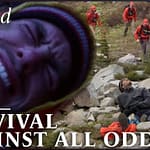Foraging for Food: A Beginner’s Guide to Wild Harvesting
Foraging for food, also known as wild harvesting, is a practice that has been around for thousands of years. It involves gathering wild plants, mushrooms, and other edibles from the natural environment. Foraging can be a fun and rewarding way to connect with nature, learn about local flora and fauna, and enjoy fresh, nutritious foods.
Foraging is a great way to supplement your diet with fresh, organic foods that are rich in nutrients and free of pesticides and other chemicals. It can also be a sustainable and environmentally-friendly way to source food, as you are not relying on industrial agriculture or transportation systems to bring food to your table.
If you are interested in foraging for food, here is a beginner’s guide to get you started:
1. Educate yourself: Before you start foraging, it is important to educate yourself about the plants and mushrooms in your area. There are many resources available, such as field guides, online forums, and foraging classes, that can help you identify edible plants and distinguish them from poisonous lookalikes.
2. Start small: When you are just starting out, it is best to focus on a few common and easy-to-identify plants and mushrooms. Some good beginner-friendly options include dandelions, wild garlic, blackberries, and chanterelle mushrooms.
3. Respect the environment: When foraging, always make sure to harvest plants and mushrooms in a sustainable and responsible manner. Only take what you need, leave some behind for wildlife and other foragers, and avoid damaging plants or their habitats.
4. Be safe: It is important to be cautious when foraging, as some plants and mushrooms can be toxic if eaten. Always double-check your identification with multiple reliable sources, and never eat anything if you are not 100% sure it is safe.
5. Cook and enjoy: Once you have gathered your wild edibles, it is time to cook and enjoy them! There are endless ways to prepare foraged foods, from salads and soups to stir-fries and preserves. Experiment with different recipes and techniques to make the most of your wild harvest.
Foraging for food can be a fun and rewarding hobby that allows you to connect with nature, learn new skills, and enjoy fresh, nutritious foods. By following these beginner’s tips, you can start your foraging journey with confidence and discover the amazing flavors and benefits of wild-harvested foods. Happy foraging!



